How to practice ikejime- learn ikejime and shinkeijime techniques: discover how to practice ikejime and shinkeijime well, and then train, these techniques take practice
Have you ever noticed that when you bring your freshly caught fish home, they are no longer as fresh when you cook them?
It’s a shame, but it happens when you don’t master the art of preparing your catches. An extra fresh fish in the morning can quickly turn into a smelly and unappetizing fish in the evening. However, there is a technique to raise the quality of your fish and bring it to the ultimate level of freshness, sashimi quality. It is an ancestral Japanese technique, which all amateur fishermen in Japan use daily, and which is also practiced by all Japanese professional fishermen, in particular those who supply sushi restaurants.
Respect the ikijime procedure… It has been practiced for almost two centuries by Japanese fishermen. Ikijime produces a big difference in the quality of the fish… This is what a study produced in
2012 by the faculty of Hokkaido. Ikijime fish, unlike fish that has suffered, offers a purer, more transparent flesh and a very superior taste quality. (Chapter: introduction: another passage)
We are now going to study the three stages of ikijime, and understand that beyond any ethical consideration, it is essential to finish the fish by avoiding stress and suffering.
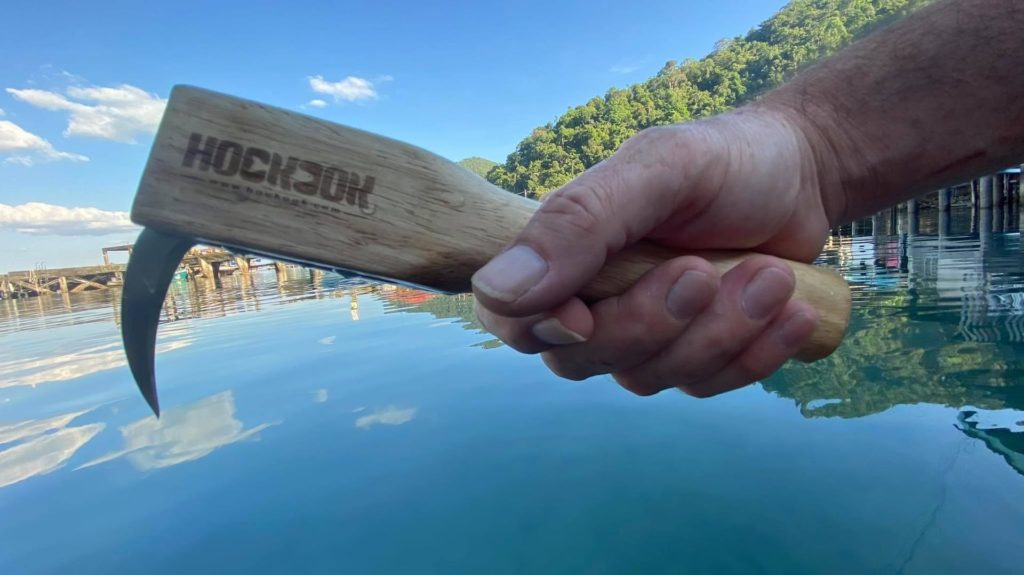
It is essential to prevent the fish from agonizing slowly. When the fish suffers, slowly suffocating out of water, there is a chemical reaction in its muscles.
Stress is not only an emotion, it is also a physiological process that uses energy and the chemical compounds present in the muscles themselves. Stress also leaves in the fish traces of chemical substances such as lactic acid and ammonia. We have all felt pain after a workout or sports…It’s a result of the deterioration of our muscles under the effect of these substances, namely lactic acid.Recent studies show that when the fish dies, the chemical reactions in its meat increase until its decay. The same goes for its ideal consumption time frame, which becomes greatly shortened. Some people keep the fish alive in a bucket as long as possible, thinking it best to preserve its freshness.
Unfortunately, that’s the worst thing you can do. Suffering lasts much longer this way, stress is increased, and since the production of lactic acid and ammonia is much higher,
the quality of its meat will deteriorate much more quickly. The fish will be bland,watery and its texture will be of poor quality. Remember that the more the fish suffers, the less good it tastes and the faster it rots.Understand that professional fishermen,
in order to keep the fish alive, use live-well tanks with automatic seawater circulation systems, preferably in the dark.
This serves to avoid stress to the fish before killing it. Since you probably don’t have any of that equipment on your boat, just kill the fish immediately to avoid causing it to suffer.Either use “no kill” fishing or kill your fish immediately without leaving them to suffer.
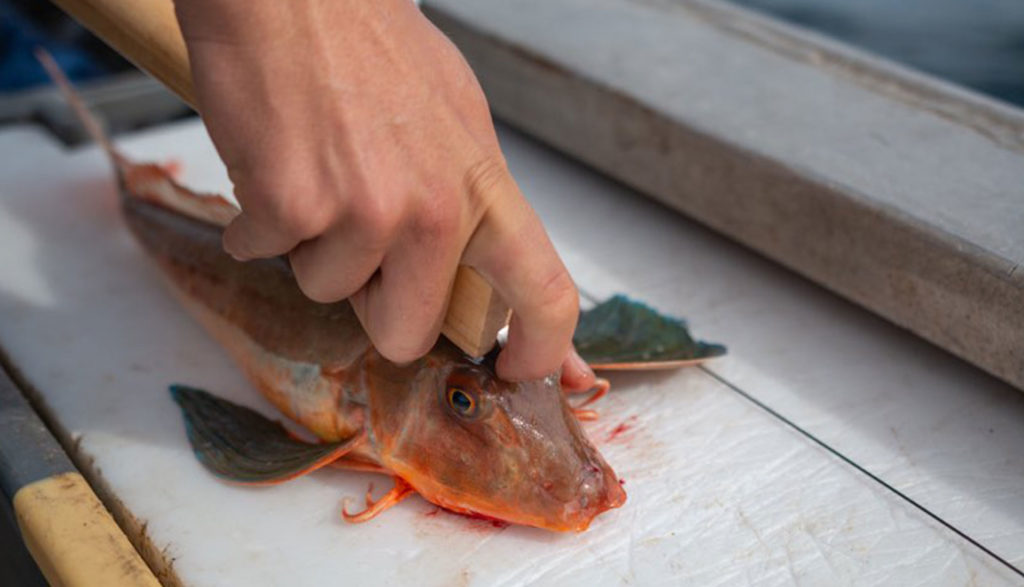
The same goes for the optimum taste, which is greatly shortened. Some people keep the fish alive in a bucket, they think they are doing the right thing by wanting to extend its life as long as possible to preserve its freshness. Unfortunately, that’s the worst thing you can do. The suffering lasts much longer, the stress of the fish is increased, the production of lactic acid and ammonia is much greater, the quality of the flesh will deteriorate much more quickly. The flesh will be tasteless, full of water and its texture will lose quality.
Remember that the more the fish suffers, the less good it is, and the faster it rots. Understand that fishing professionals, to keep fish alive, use tanks with automatic water renewal, and if possible in the dark. This is in order to de-stress the fish before sacrificing it. As you do not have this type of equipment on your boat, immediately sacrifice your fish and prevent them from suffering. Practice no kill, or immediately sacrifice your fish without hurting them.
Immediately after catching the fish, you must kill it by destroying its brain,
the root of consciousness. The simplest way to do this is to use a sharp object to pierce
between the two eyes. We will see later on different ways to proceed, but the simplest
is to use a “tekagi” or knife with a heavy blade, or any other sharp object.
Modern or traditional discover our tegaki :
https://hookook.com/en/tegaki/
There are two strategic locations to destroy the brain. The simplest is to pierce at an angle between the two eyes.
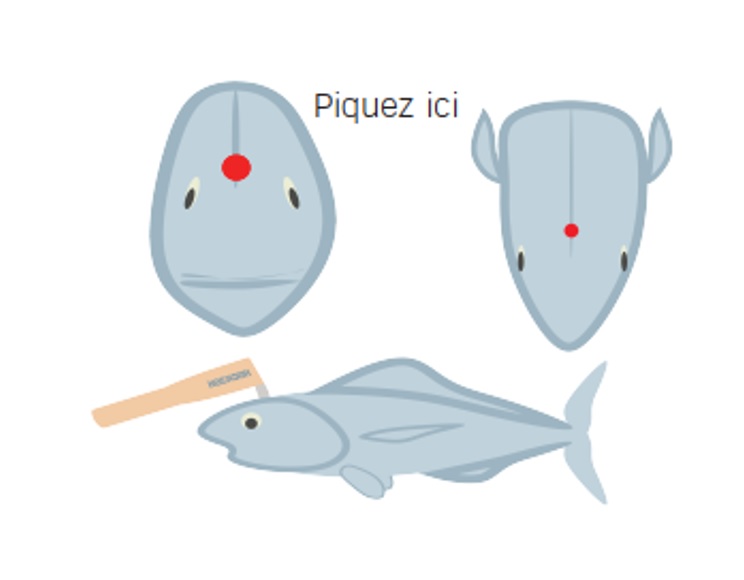
The more technical way is to pierce the fish laying on its side by planting the “tekagi” directly above and behind the eye. This more technical approach requires a greater knowledge and expertise, and therefore, we suggest to start by aiming between the eyes. When the blade penetrates the brain, the fish immediately has a nervous system reaction, which lets us know the brain has been destroyed. The heart goes on beating, but the consciousness is gone. It’s what we call brain death and means that you have avoided letting the fish suffer. Mother Nature will thank you for this act of conscience by preserving its meat.
How to practice ikejime- learn shinkeijime technique.
This procedure aims to mute the phone. The spinal cord is the communication line of the central nervous system.. By destroying it you stop the information from circulating.
In other words, to practice ikejime well, you must keep the muscle from knowing that it is dying and therefore you delay the production of the chemical substances that speed up decomposition. This results in optimum taste for a longer period of time and a lengthening of time for the maturation of the fish. Even after the death of a fish, the nervous system remains active for a long time, the muscles continue to consume their stored ATP. They search for a source of energy, but there is no longer blood to bring them oxygen and therefore the muscles consume the energy reserves in their cells, called ATP. The decrease of the ATP is accompanied by an increase in acidity in the muscles and causes their contraction in the entire body. The same goes for us when we engage in sports. The consumption of the ATP contained in our muscular cells causes an increase in acidity, characterized by stress and contractions: the famous muscle cramps.
You drink water and stretch out the muscle to fix it and eliminate excess lactic acid.But let’s get back to our fish. When the ATP is finished, the muscles literally die. The body of the fish becomes stiff; this is the state of rigor mortis. After this phase, the body begins to go limp and the proteins decompose into amino acid, leading finally to decomposition. By destroying the spinal cord (spine), you put the muscle to sleep, which slows the process and helps the maturation by preserving the stored energy in the cells.
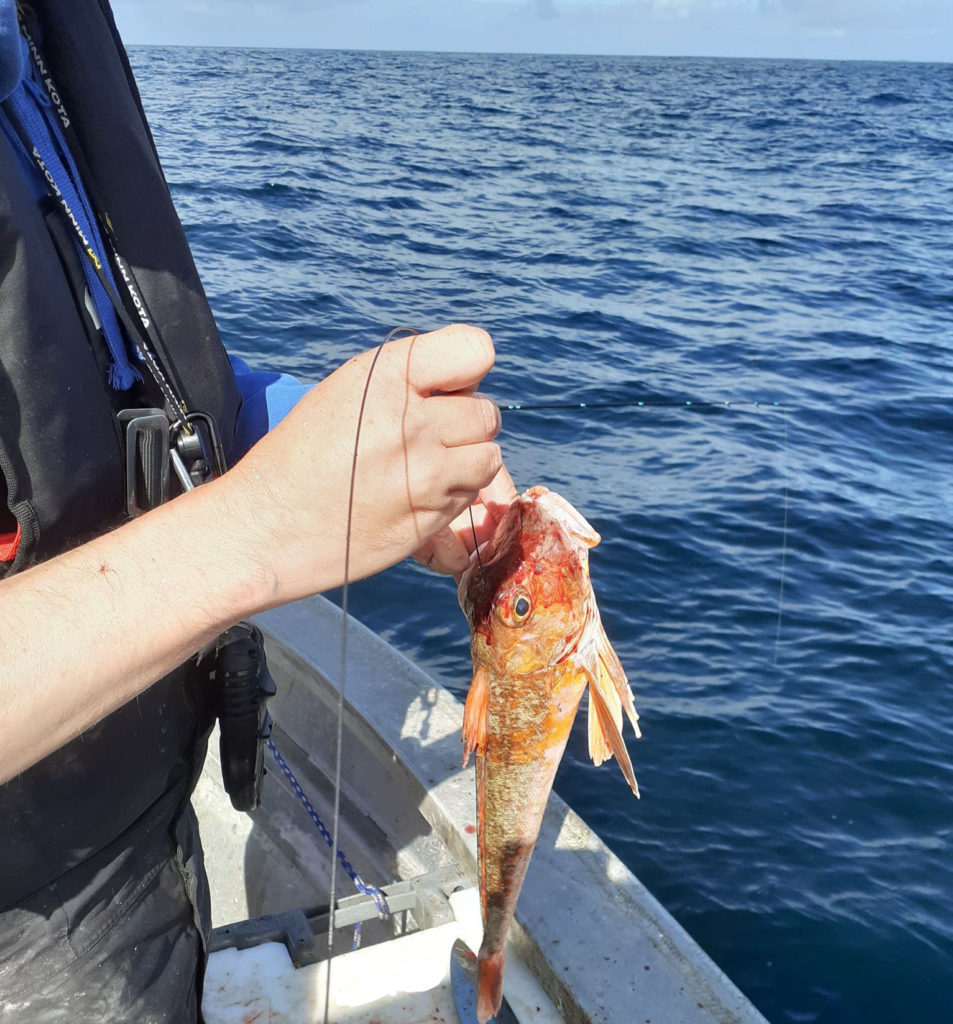
It’s the ultimate secret, the most advanced part, and the most troubling…
If you feel that at the end the needle gets blocked, it means you are doing it correctly and that your needle has reached the tapering region of the vertebrae, at the end of the tail. This operation, which is a most advanced technique, is called “seikijime” and it is critical.
Get yourself a good “seikijime” wire, with a diameter of between 1 and 2 millimeters, depending on the type of fish and its size.
This is the ultimate secret, the most technical part, and the most disturbing.
Check out our shinkeijime wire :
https://hookook.com/en/seikijime-needles/
Place the ikejime wire in the hole which you previously made between the eyes. You can also sever the tail as well as the backbone without severing the other half of the meat. Pass your needle along the upper side of the backbone. You can go either through the head or through the tail, whichever way is more convenient for you, as the final result will be the same. The spinal cord is situated along the upper side of the backbone, on the top part of the fish. In the exact moment that you touch it with your needle, the muscles react and seem as if electrified.

Even if you have the impression that the animal is suffering, know that at this stage, it can no longer feelpain. It is only a reflex of the nervous system, as its consciousness went out during the previous step. Make in and out movements in the spinal cord with the help of the wire until the muscles no longer react.
Blood is not good, it’s the cause of the bad odor of fish, not to mention a source of bacterial contamination. It’s best not to wait but to drain it as soon as possible, just after having destroyed the spinal cord.
If you don’t, the blood will permanently spoil the meat and speed up its decay.Why not drain the blood before sacrificing the fish? Some fishermen think to do well by bleeding out the fish to kill it. Instead of using “ikijime,” they bleed the fish out. We’ve also seen this technique used by fish breeders. This is a mistake, as studies show that the quality is higher when we start by eliminating the suffering of the fish. That’s the first thing to do, followed by destroying the spinal cord and finally bleeding out the fish. By starting with bleeding out the fish, stress will invade his body, and furthermore the spinal cord will not be destroyable without sacrificing the fish. This results in an overall decrease of its quality and an increased sufferance for the fish

Because we are not vampires, it is now important to drain the blood. Blood is bad, blood is responsible for the strong fish odor. It speeds up the rotting of the meat, and it is also what sustains the life of bacteria. Now, you must drain the blood from your catch. Fish have four gills on each side. Place a knife blade between the third and fourth gills and cut towards the mouth. This will sever the main blood vessel. The gills are where the blood is recharged with oxygen.This zone contains a lot of blood, sever it cleanly. A simple incision on one side is enough to drain much of the thicker blood. It is unnecessary to do it on both sides, however some fishermen also sever the tail of the fish until the backbone is severed, while avoiding to cut the other side of the meat. This helps the drainage of the blood and can also help you during the “seikijime” step described previously. Now place your fish in a bucket of fresh water for about 15 minutes. Ideally you should add ice if you are working in a hot area. This procedure is crucial, avoiding to bleed out your fish dry betters its quality. After 5 to 15 minutes depending on the fish size, place your fish in the cooler, while respecting certain rules which we will list later…


After “ikijime”, place the fish ON the ice, and not IN the ice, and definitely not in ice water for a long period of time. In a classic cooler, you’ll reach 5° Celsius on ice and about 8 to 10° just under the lid, which is perfect for moderate cooling.
If your cooler allows for this, you can wait until the next day to clean your fish. This of course is an option only if your cooler is high quality, allowing you to keep your “ikijime” fish at the ideal temperature Everyone knows it’s important to store fish in a cool place… obviously, there we all agree… but it’s not as simple as it seems, and to avoid damaging your catch, it’s necessary to store them correctly respecting certain rules which we will cover here.Imagine the scenario… During your fishing trip, you put your fish in the cooler with ice. By the time you get home, the ice has melted and your fish are swimming in bloodied ice water. Of course, the water is still very cold, with a few ice cubes floating here and there, and the fish are as stiff as if they had been frozen. You might say, “ok, they should be cold enough…” Yes, they are cold enough, but the truth is that you could have done much better…To keep it simple, the salt concentration in seawater is around 3.3% (depending on the sea or ocean). Living organisms on the other hand have about 0.9% and freshwater is at about 0%. When you place fish in freshwater, the osmotic pressure sucks the freshwater into the fish and that causes a serious problem as it permeates the fish, lowers the quality of its flavor, and speeds up its decay. In other words, doing so considerably damages your catch and can ruin all the effort put in previously. Do not let your fish soak in fresh water, even if it consists of melted ice. Don’t do it, don’t ever do it again!
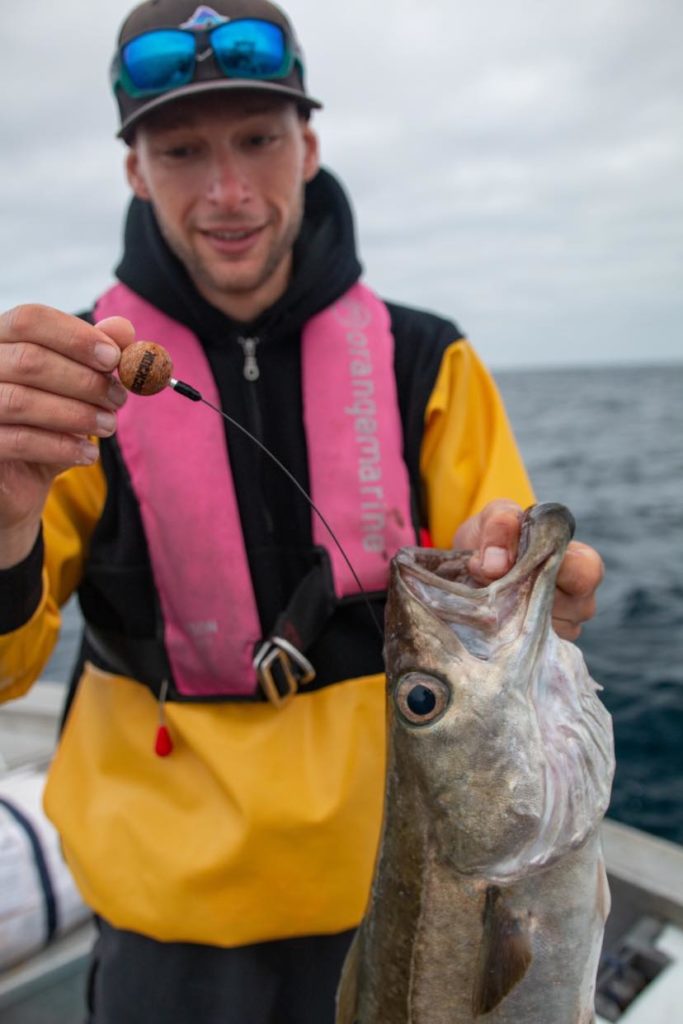
Science has proven that the ideal condition in which to store fish is at a temperature between 5 and 10° Celsius in the phase preceding rigor mortis. From the stage of rigor mortis (meaning the fish is stiff and hard), it becomes preferable to store it at a temperature of between 0 and 5° Celsius. When your fish are stored at a temperature of 0° Celsius, they become hard and their decomposition is sped up. Remember the following technique: in the cooler, store your fish out of water, at a temperature between 5 and 10° Celsius. Avoid any direct contact with ice in this phase.
Once you get home, after the stage of rigor mortis, store your fish at a temperature between 0 and 5° Celsius, making sure that this temperature does not drop below 0°. If you live in a temperate region, and must use freezer packs in your cooler, place a towel or a board to avoid direct contact between the fish and the freezer packs. Obviously, your fish should not be crushed against each other as this risk damaging them. Use a cooler with a “divider” which will keep your fish dry and away from ice and place your fish in such a way as to keep them from crushing one another. Following these tips will greatly improve the taste of your fish
Order ikejime tools, tegaki or wire shinkeijime :
https://hookook.com/en/our-retailers/
Become a Hookook retailer in Europe contact :

